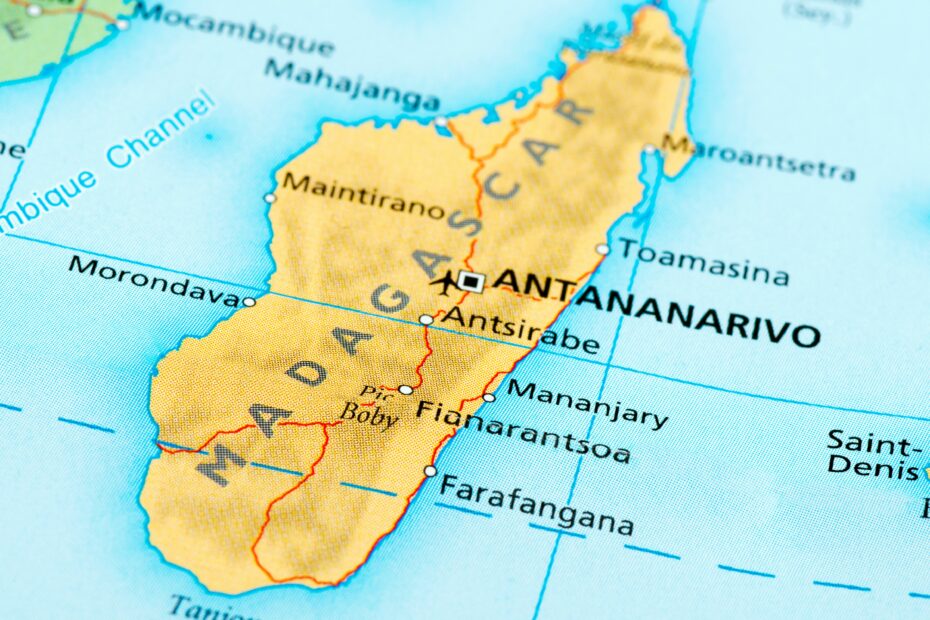Enveloped by the turquoise waters of the Indian Ocean, Madagascar is a world unto itself, famed for its unique wildlife, lush landscapes, and vibrant culture. Known as the ‘eighth continent,’ it is a land where nature and people create a harmony of ecological and cultural wonders—each more fascinating than the last. Here’s a closer look at what makes Madagascar a treasure trove for explorers and enthusiasts alike.
Geography and Climate
Madagascar, the fourth-largest island in the world, boasts a geographical wonder as diverse as its illustrious heritage of flora and fauna. The island is a megadiverse country with a high concentration of endemic species. It is home to around 5% of the world’s biodiversity, and over 90% of its wildlife is found nowhere else on Earth. The iconic Baobab trees dotting the landscape and the endearing lemurs leaping through the forests of the emerald-green national parks exemplify this ecological uniqueness.
Madagascar’s climate varies from tropical along the coast and temperate inland to arid in the south, supporting a wide range of ecosystems, including rainforests, dry deciduous forests, and spiny deserts. This climatic diversity underscores the multitude of experiences available to visitors and researchers alike. Read Also: East Africa’s hidden tourism treasures in the Indian Ocean

History
Madagascar’s history is as diverse and captivating as its landscapes. Archaeological findings suggest that the island was first inhabited between 200 BC and 500 AD by Austronesian seafarers from Borneo, Southeast Asia, who were later joined by Bantu migrants crossing the Mozambique Channel from East Africa. These early inhabitants are the ancestors of the Malagasy, a people divided into 18 ethnic sub-groups, all of whom share a common Malagasy language.
The island was largely uninfluenced by external forces until the arrival of Europeans in the 16th century. The Portuguese were the first Europeans to set foot on Madagascar, followed by the French, British, and Dutch, all of whom established trading posts along the coast. However, it was the French who colonized Madagascar in 1896, ruling it as a colony until Madagascar gained independence in 1960.
Madagascar’s history is marked by periods of political and social instability, including several coups, political violence, and economic crises. Yet, the country’s rich cultural heritage, steeped in tradition and animated by local customs and festivals, remains an enduring testament to the resilience and vibrancy of the Malagasy people.
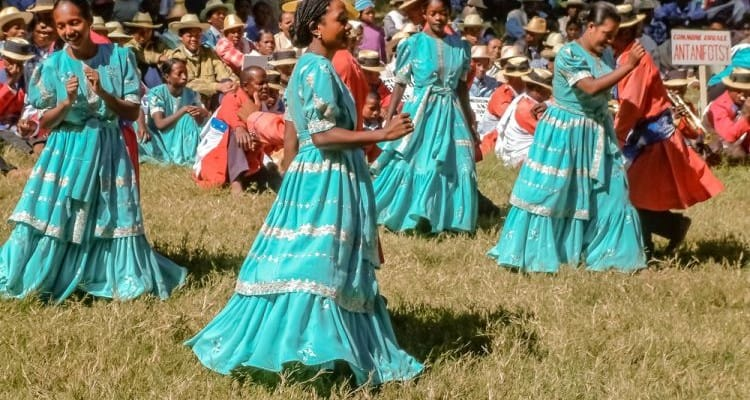
Culture and Traditions
Madagascar stands as a remarkable testament to the rich roots of cultural influences spanning Southeast Asia, East Africa, and Oceania. The island also bears the marks of various settlers, including Arabs, Indians, British, French, and Chinese, all of whom have left their indelible imprints upon its unique heritage. At the heart of Malagasy culture is ancestor worship, permeating every aspect of life and death—seen as an integral part of existence. One intriguing custom is Famadihana, or “the turning of the bones.” This funerary tradition, also known as “dancing with the dead,” is a testament to the profound reverence the Malagasy people have towards their ancestors.
The Malagasy language, spoken by the local populace, is an Austronesian dialect with several variants; the Merina dialect is, however, considered the standard for official purposes. Other cultural customs include burying the umbilical cord of a newborn, seeking blessings from older family members, and the ritual of mixing a baby’s first haircut with honey and tuberous roots like sweet potatoes.
Among Madagascar’s 19 ethnic subcultures, each carries its own distinct social makeup and traditions, but they share a strong belief in magic. Witch doctors and astrologers are frequently consulted for advice, highlighting the spiritual depth of the Malagasy culture. Read Also: Discover Kenya: From Diverse Landscapes to Rich Culture
The ancient sacred rules or taboos, known as fady, are still widely observed across the nation. Each village has its own, and while some have played a role in preserving threatened landscapes or animal species, others have more sinister implications, such as the frowned-upon practice of abandoning or killing twin babies, still allegedly respected by some. Despite the harsh realities and challenges, these fady offer a profound insight into the cultural fabric of this island nation—where tradition, nature, and spirituality intersect.

Music and Dance
Music and dance are integral aspects of Madagascar’s cultural richness. Traditional Malagasy music, with its melodic essence, is distinguished by a strong chordophone presence over percussion instruments. A popular form of this music is the Hira Gasy, a unique blend of vocal music that amalgamates storytelling, poetry, and dance. This traditional music often accompanies dance performances, characterized by intricate footwork performed in a circular movement. The dancers weave in and out of the circle’s center, and sometimes, their performance incorporates elements of storytelling, reflecting scenes from traditional Malagasy tales and legends.
The music is typically played on traditional instruments such as the valiha, kabosy, and marovany. Additionally, Salegy, a dance music genre that emerged in the mid-20th century, enjoys widespread popularity across Madagascar. On the whole, music and dance serve a multitude of secular and sacred roles in Malagasy society – they accompany everyday tasks, provide entertainment, preserve historical narratives, and convey social and political messages. Through these vibrant expressions of artistry, the people of Madagascar connect with their past, celebrate their present, and voice their hopes for the future.
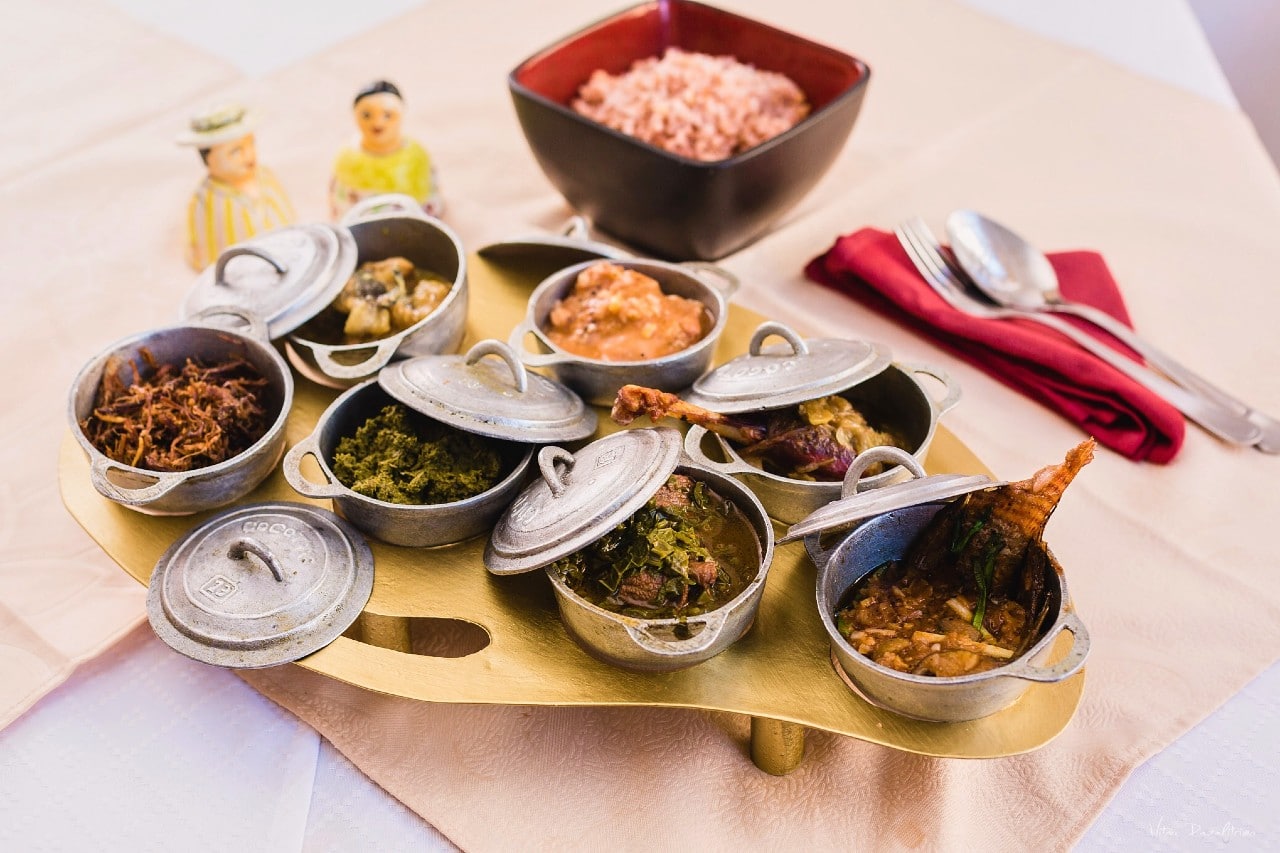
Food and Cuisine
Madagascar’s cuisine reflects its diverse cultural heritage, with influences spanning from French, Austronesian, and East Asian to Middle Eastern and Bantu. Madagascan cuisine is centered around rice, typically served with accompaniments such as ‘Laoka,’ which could be a mixture of meat, poultry, or seafood with vegetables seasoned with aromatic herbs and spices. Some common accompaniments include romazava, a meat stew with green leafy vegetables, and ravitoto, stewed pork with shredded manioc leaves.
A few other popular dishes showcase the gastronomic essence of the island. Ravitoto, a blend of mashed cassava leaves served with pork or zebu meat, offers a hearty, rustic flavor. Romazava, a meat stew simmered with green leafy vegetables, is a traditional comfort food, while Lasopy, a delicate soup made from veal or beef broth and vegetables, is revered for its soothing qualities.
Madagascar’s coastal location gifts it a bountiful array of seafood. Lobster in vanilla sauce, squid, prawns, and a variety of grilled or fried fish are just a few of the mouth-watering offerings. The island’s cuisine is seasoned with an array of spices, including ginger, garlic, onion, tomato, salt, vanilla, and curry powder, adding depth and complexity to the dishes.
The island’s tropical climate yields an abundance of fruits and vegetables, which are often transformed into vibrant fruit juices, robust coffees, and soothing herbal teas. Madagascar’s libations also extend to alcoholic beverages, with rum, wine, and beer all popular choices.
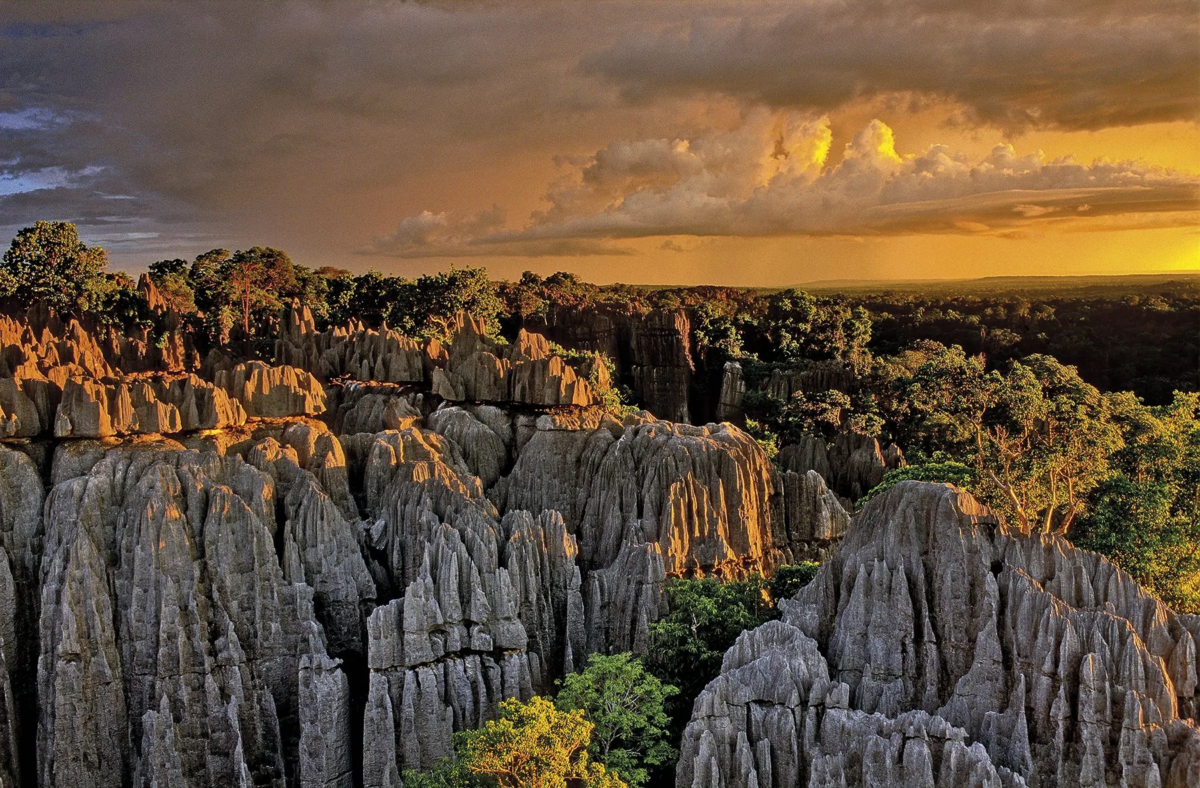
Tourism
Tourism in Madagascar offers a unique blend of nature, adventure, and cultural immersion. The country is renowned for its incredible biodiversity, boasting a multitude of endemic species found nowhere else on Earth. This ecological wonderland is a mecca for nature lovers, with its expansive rainforests, stunning beaches, and otherworldly limestone formations known as Tsingy. Visitors have the opportunity to encounter exotic creatures like lemurs and chameleons and an array of bird species in national parks such as Ranomafana and the UNESCO World Heritage site Tsingy de Bemaraha.
Alongside natural beauty, Madagascar’s cultural heritage is a significant draw. Tourists can delve into the local traditions and customs, witness the lively music and dance performances, or sample the diverse culinary delights.
Madagascar’s coastline caters to beach enthusiasts and water sports adventurers, with beautiful sandy beaches, crystal clear waters, and ample opportunities for diving, snorkeling, and surfing. Nosy Be, a popular island off the northwest coast, offers idyllic beach landscapes, and the city of Toamasina is a gateway to picturesque coastal scenery and marine life.
The historic Royal Hill of Ambohimanga, a UNESCO World Heritage site, provides a fascinating glimpse into the island’s regal past. The capital city, Antananarivo, is a bustling metropolis offering a blend of traditional markets, colonial architecture, and vibrant nightlife.
Despite the country’s immense potential, tourism in Madagascar faces challenges, including limited infrastructure and political instability. However, efforts are underway to develop sustainable tourism that benefits local communities and preserves the country’s unique environment. Visitors to Madagascar are sure to embark on an unforgettable journey of discovery, culture, and natural beauty.
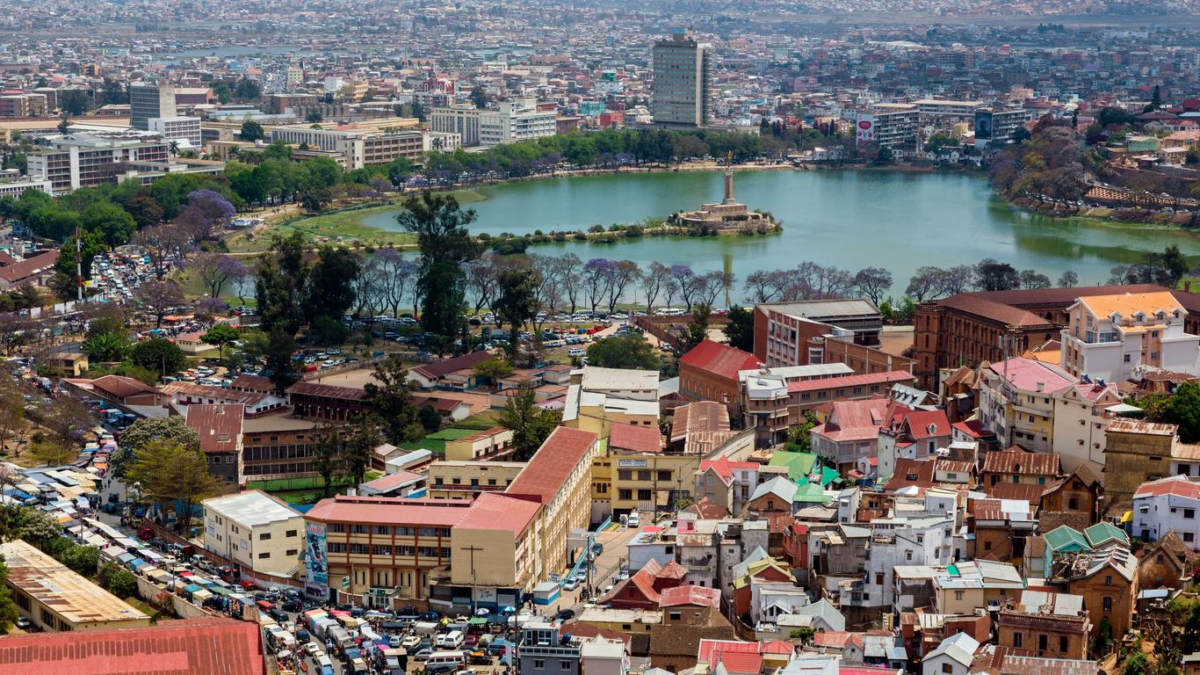
Economy
Madagascar’s economy is largely based on the agricultural sector, which accounts for nearly 25% of the GDP and employs approximately 80% of the population. The country is one of the world’s leading producers of vanilla, cloves, and ylang-ylang. Rice, the staple food, is cultivated extensively, along with other crops like coffee, sugarcane, and cassava. Mining is another significant sector, with large deposits of ilmenite, chromite, coal, and precious stones like sapphires. The textile industry also contributes to the economy, particularly through the export of clothing and apparel.
Despite its wealth of natural resources, Madagascar remains one of the world’s poorest countries, challenged by political instability, inadequate infrastructure, and a high rate of population growth against limited resources. Over 70% of the population lives in poverty, and food security remains a significant concern.
The country is working towards economic development with efforts focused on promoting sustainable agriculture, improving infrastructure, enhancing education and healthcare services, and attracting foreign investment. The government is also striving to develop the tourism sector, recognizing its potential as a significant revenue source and a way to promote sustainable development. Progress, however, is slow, as continued political instability and economic vulnerability to natural disasters hinder these efforts.
Bottom Line
Madagascar is a country with a rich cultural heritage, incredible biodiversity, and untapped potential. Its diverse cuisine, influenced by various cultures, and remarkable flora and fauna make it a unique destination. Despite challenges like political instability and economic hardship, Madagascar is focused on sustainable development in sectors like agriculture, tourism, and infrastructure. With its natural beauty, rich traditions, and growth potential, Madagascar is a fascinating study of resilience and potential, showcasing the indomitable spirit of its people.

